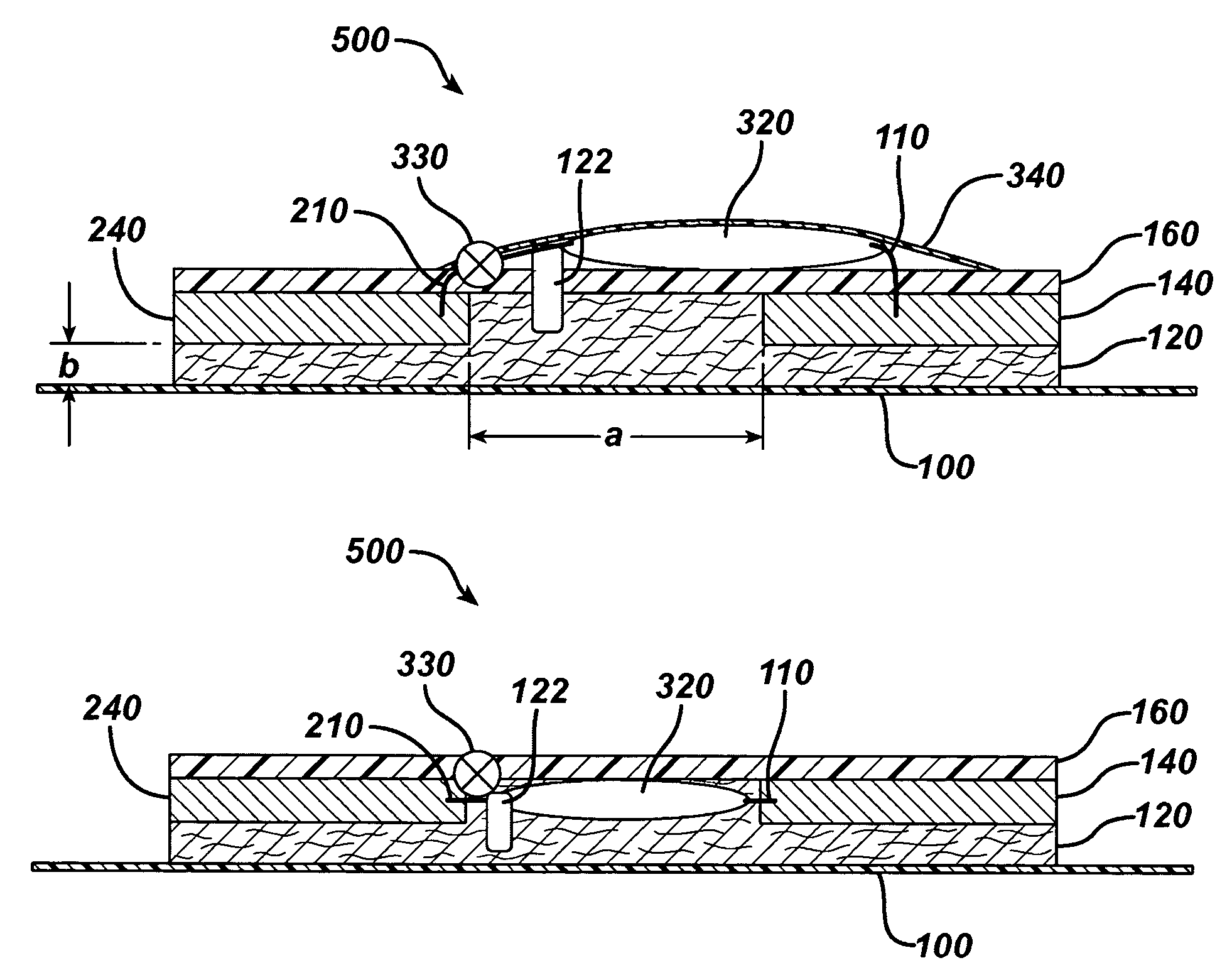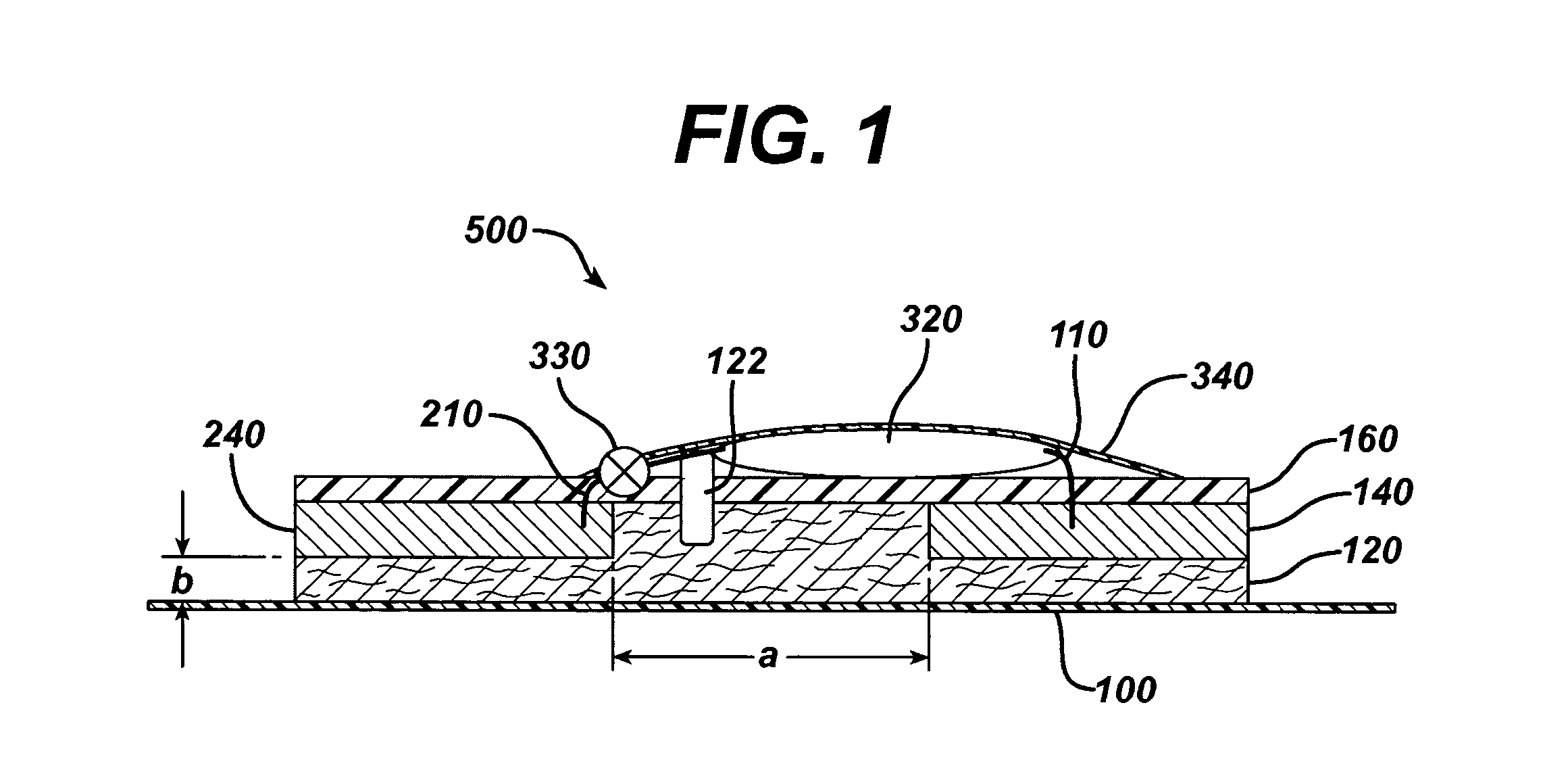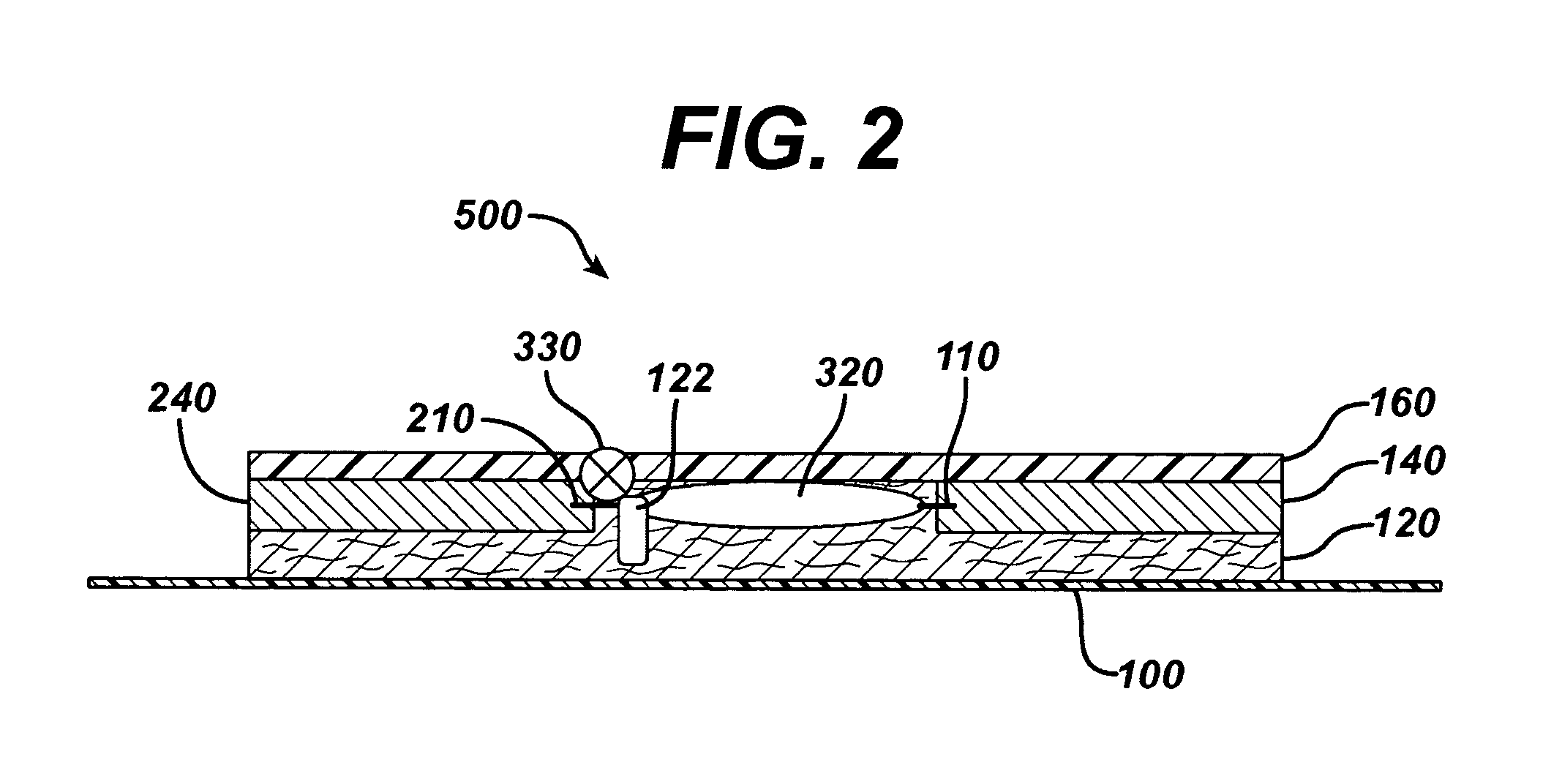Methods of treating acne and rosacea with electrochemically generated zinc ions
a technology of electrochemical generation and zinc ions, which is applied in the field of electrochemical generation of zinc ions for treating acne and rosacea, can solve the problems of no cure for acne or rosacea
- Summary
- Abstract
- Description
- Claims
- Application Information
AI Technical Summary
Benefits of technology
Method used
Image
Examples
example 1
Carriers
[0120]Examples of several carriers, including the weight percentage range of the ingredients of such carriers, are set forth in Table 1.
[0121]
TABLE 1Percent by Weight of the CarrierComponentNo. 1No. 2No. 3No. 4No. 5No. 6Salicylic acid0.1-10 22000.1-10 Benzyl peroxide0000.5-10 00Sulfur000033Resorcinol000111Benzalkonium0-20.10.10-20-20-2chlorideBenzethonium or0-2000-20-20-2methylbezethoniumchlorideCetylpyridium0-20.10.10-20-20-2chloridePhospholipid CDM 0-4055 0-40 0-40 0-40Hydrogen peroxide 0-3003 0-30 0-30 0-30Buffer (citrate, 0-1022 0-10 0-10 0-10lactate, orphosphate saltsof sodium,potassium, orlithiumGelling agent 0-2055 0-20 0-20 0-20(e.g.,polyacrylates,cellulose,natural orsynthetic gums,orpolyacrylamide)Chelating agent0-20.10.10-20-20-2(e.g., EDTA)Propylene glycol 0-302015 0-30 0-30 0-30Polyethylene 0-5000 0-50 0-50 0-50glycolPolypropylene 0-4000 0-40 0-40 0-40glycolEthyl alcohol 0-50015 0-50 0-50 0-50Isopropyl alcohol 0-5000 0-50 0-50 0-50Dimethyl 0-2020 0-20 0-20 0-20is...
example 2
In vitro Inhibition of P. acnes by Electrolysis
[0123]A BacT / ALERT system (BioMerieux, Inc., Durham, N.C.) was used in the P. acnes inhibition experiment. Briefly, 40 ml of an anaerobic casein and soy based broth culture medium in a bottle (BacT / ALERT SN, Organon Tekniks Corp., Durham, N.C.) was inoculated with P. acnes. The fully automated BacT / ALERT system was used to detect P. acnes growth over a 14-day study at 35° C. by continuous monitoring of CO2 production using an optical calorimetric sensory system.
[0124]A selected pair of the electrodes (Table 2, Columns 2 and 3) was disinfected with 70% isopropyl alcohol, and inserted through the rubber stopper into the culture medium in a nitrogen glove box. Some electrodes were connected to the poles of a battery (either 1.5 or 3V as indicated in Table 2, Column 3) for 30 minutes. The electrodes were then immediately removed from the BacT / ALERT bottle, which was then placed into the automated incubation and monitoring system for two wee...
example 3
In Vitro Electrode-Salicylic Acid Compatibility
[0128]The following experiment was conducted to determine the compatibility of electrodes with salicylic acid. A pair of test electrodes was immersed in 5 ml of 1.5% salicylic acid solution (solvent 50% ethanol / 50% water). A pre-determined voltage was applied to the electrodes (by connecting the electrodes to a battery or batteries) for certain length of time as indicated in Table 3. Observations were made on color change of the test solution.
[0129]The solution with the zinc anode showed no discoloration, indicating good compatibility with salicylic acid during the passage of electric current. Use of the platinum anode unexpectedly resulted in discoloration, indicating incompatibility with salicylic acid under this experimental condition.
[0130]
TABLE 3ElectrodeMaterialTestObservationAnodeCathodeVoltageDurationSolution color(+)(−)(V)(min)changePlatinumPlatinum310Colorless → yellowPlatinumPlatinum910Colorless → brownZincPlatinum1.510No col...
PUM
 Login to View More
Login to View More Abstract
Description
Claims
Application Information
 Login to View More
Login to View More - R&D
- Intellectual Property
- Life Sciences
- Materials
- Tech Scout
- Unparalleled Data Quality
- Higher Quality Content
- 60% Fewer Hallucinations
Browse by: Latest US Patents, China's latest patents, Technical Efficacy Thesaurus, Application Domain, Technology Topic, Popular Technical Reports.
© 2025 PatSnap. All rights reserved.Legal|Privacy policy|Modern Slavery Act Transparency Statement|Sitemap|About US| Contact US: help@patsnap.com



